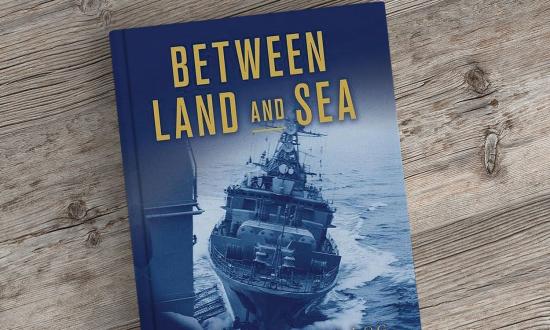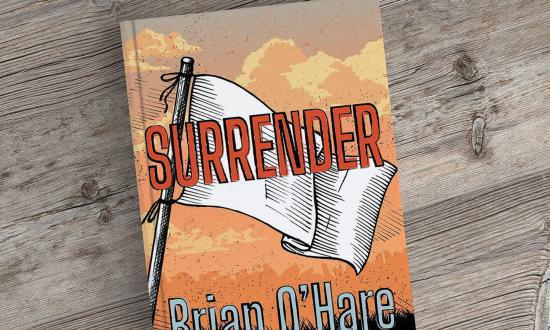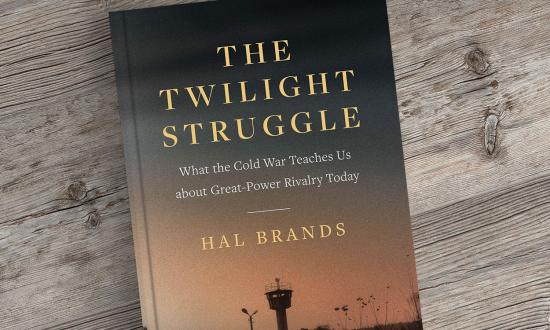Why We Fight: The Roots of War and the Paths to Peace
Christopher Blattman. New York: Viking, 2022. 388 pp. Maps. Notes. Biblio. Index. $32.
Reviewed by Dustin League
In his new book, Why We Fight, economist Christopher Blattman seeks to address three challenges. The first two are established in the first pages—to understand the root causes of major conflict and map effective strategies for avoiding the same. The final challenge remains implicit until the very end, when Blattman makes his reason for writing this book explicit: to inspire people to learn and do something while giving them guides “about how to act smart and responsibly.” Big challenges all, and Blattman certainly does not lack for ambition—an ambition matched by the scope of cases he chooses to study.
Attempts to understand the causes of conflicts trace back at least as far as Thucydides. In the centuries since, historians, economists, political scientists, and international relations scholars have continued to study conflicts and attempt to understand them. Why We Fight is not a revolutionary work that attempts to overthrow these past efforts; rather it is an attempt to synthesize much of the current research and present it clearly and concisely. What Blattman brings to the field that is most refreshing is his willingness, even eagerness, to address conflicts other than state-on-state war. He spends more time describing how drug cartel and street gang fights break out (one section describes a roving street fight between rival soccer fans) than he does on major wars.
Blattman is an excellent guide through this realm. He weaves scholarly research from wide and disparate sources into stories of his personal experience working in conflict regions. He also provides the reader with a kind of meta-concept through which to view conflicts: the bargaining range. This concept—that conflict will be avoided if two parties can find a mutually agreeable “bargain”—is used throughout the book. Various conditions shrink the bargaining range, and these are what Blattman identifies as the five roots of war: unchecked interests, intangible incentives, uncertainty, commitment problems, and misperceptions. Each is explored in detail, backed up with well-cited research, and illuminated through compelling narratives. Blattman does not discount the roles of leaders—whether heads of state or gang leaders—but these leaders may have a wide or narrow range of options that avoid conflict.
The second section shifts from how conflict starts to strategies that states—or nonstate actors—use to avoid conflict. Here is another area where Blattman’s sense of scope is appreciated. Much conflict study is based on cases in which conflict avoidance failed. Blattman chooses to explore several cases in which a bargain is achieved and major conflict did not occur. Looking for a map to peace by studying only cases in which peacemaking failed seems obviously flawed once pointed out, but those are the ones that draw the most attention. War holds a fascination for historians and laypersons alike, but it can be equally interesting to find out why Indian coastal cities with medieval trading ports were much less likely to see outbreaks of Hindu-Muslim religious riots than their neighbors.
Against the first two challenges Blattman sets for himself, he is largely successful. Why We Fight is well-written, compelling, and never dry. He mines a vast body of research and makes it easy for readers to understand within the context of his bargaining range concept. Whether he is as successful at inspiring and guiding is yet to be seen. Perhaps in the years to come we will see a crop of—to use Blattman’s terms—piecemeal engineers helping to steer societies toward peace. One can certainly hope so.
Mr. League is a military operations analyst and former U.S. Navy submarine officer. He studies submarine warfare issues for the U.S. and Australian navies.
Warfare and Logistics Along the U.S.-Canadian Border During the War of 1812
Christopher D. Dishman. Lawrence, KS: University Press of Kansas, 2021. 334 pp. Maps. Illus. Notes. Biblio. Index. $39.95.
Reviewed by Andrew G. Wilson
The War of 1812 is a topic about which many readers might feel little is left to be said. And those interested in the war are more often than not focused on the famous frigate engagements that did so much to establish the growing reputation of the fledgling U.S. Navy or the Battle of New Orleans that made Andrew Jackson a national hero. But as some contemporaries of the conflict along with many of today’s scholars recognized, it was the northern theater along the Great Lakes that was to be the fulcrum of the war.
With Warfare and Logistics, Christopher Dishman, an independent scholar, provides those interested in the full sweep of the war “a comprehensive study” and highly readable account of the conflict along the U.S.-Canadian border, a region that would prove pivotal to the outcome of the war. Drawing on an impressive array of both primary and secondary source material to substantiate his arguments, Dishman affords the reader an excellent sampling of the difficulties, tragedies, and occasional triumphs associated with the war along this contested border space. In just under 300 pages, he endeavors to illustrate not only how the Great Lakes—and the battles that took place around them or on their waters—were the most critical of the war (for both sides), but also how the circumstances that dictated the various outcomes of these struggles were firmly rooted in which side was best positioned or managed logistically. In both cases, Dishman is successful.
Given the extremely limited road networks between strategic strong points (a problem magnified by long and bitter winter conditions), control of the lakes for the purposes of military supply and communication remained of paramount importance throughout the struggle for both British and U.S. forces. Focusing primarily on 1812–14, Dishman illustrates the extreme strategic difficulty Britain faced in attempting to hold an extended east-west oriented string of settlements and frontier posts, constantly under threat from American attacks that (if successful and properly supplied) could sever her vulnerable 1,300-mile supply line originating in Halifax. Furthermore, given events in Europe, the British Army had limited reserves to secure this vital supply line linking Upper and Lower Canada. In essence, as Warfare and Logistics makes abundantly clear, “dependence on external supplies meant that military operations in one theater could produce cascading effects hundreds of miles from the battle.”
While Dishman ably sketches such key events as the Battles of Queenston, York, Lake Erie, and Thames, and vividly portrays the leaders involved in the various engagements, it is the highlighting of transport routes and methods, key production centers such as Pittsburgh, and the associated obstacles overcome that fully illustrates the magnitude and complexity of the war, owing to its frontier locale.
Pittsburgh is a prime example, as her three foundries were a crucial element in the success of U.S. naval efforts on Lake Erie, as they “could provide cannon, round shot and grapeshot and other materials to the dockyard.” In short, the true strength of Dishman’s work is in clearly demonstrating the magnified difficulties (for both sides) of successfully managing a war effort across such an expansive mass of wilderness, with limited transportation infrastructure, and in the case of U.S. activities, under a near-continuous threat of attack by hostile Native American tribes aligned with the British war effort.
Indeed, Dishman makes clear that “the safe and timely arrival of soldiers, shipwrights, cannon, and other provisions often dictated a battle’s outcome before a shot was fired.” Even more evident was the pivotal role played by even a threat to the interruption of such provisions and their timely movement. In short, the war on the northern frontier, both ashore and afloat, was a war of prepositioning matériel and effective movement of men and industrial infrastructure and product, despite the hostile frontier conditions.
Dishman’s Warfare and Logistics deserves a place on the shelf of any serious student of the War of 1812. In fact, if read in conjunction with William S. Dudley’s Inside the Navy of 1812–1815 (John Hopkins University Press, 2021), both the serious scholar and armchair historian alike will fully comprehend the broad range of strategic, tactical, logistic, and environmental issues that leaders on both sides of the conflict had to overcome to operate effectively. In describing the complexities of war on the northern frontier, with all of the various actors straining under the weight of time, distance, and wilderness conditions, Dishman has succeeded marvelously in illuminating how both sides of the conflict overcame a multitude of obstacles to simply fight the war, let alone achieve victories.
Mr. Wilson is a graduate of the U.S. Naval War College and an operational representative with the Department of the Navy.
Captain Chaos: Navy Cross Recipient Warner W. Tyler, Carrier Air Group Nineteen, And The Battle For Leyte Gulf
Captain Steven E. Maffeo, U.S. Navy (Retired). Annapolis, MD: Focsle, 2022.
318 pp. $26.
Reviewed by Commander Edward Naidamast, U.S. Navy (Retired)
With Captain Chaos, author Steven Maffeo has given readers a genuinely gripping, page-turning story of U.S. naval aviation, highlighted by some of the fiercest at-sea engagements of the Pacific theater during World War II.
Captain Chaos is Maffeo’s sixth book, among which he has published Most Secret and Confidential: Intelligence in the Age of Nelson and U.S. Navy Codebreakers, Linguists, and Intelligence Officers against Japan, 1910—1941: A Biographical Dictionary. The latter (reviewed in Proceedings in June 2016) is a superbly researched and finely written compendium of the men and women who created organizations and compiled the intelligence information that was instrumental in successfully prosecuting the war in the Pacific.
This new title suggests a full biography of Denver-native and Navy Cross recipient Warner Tyler—which it is. But, in reality, the book is much more, as it presents a solid story of Air Group 19, from when it was stood up in August 1943 to its embarkation on board the Essex-class “fast carrier” USS Lexington (CV-16) from July to November 1944, culminating in the Battle of Leyte Gulf.
Captain Maffeo places the reader in the cockpits with these brave young souls as they piloted TBF/TBM Avenger torpedo bombers, SB2C Helldiver dive bombers, and F6F Hellcat fighters against ground installations and the Japanese Combined Fleet. Flying directly into massive antiaircraft fire directed against them, the pilots maintained steady hands to prosecute their attacks against some of Japan’s most heavily defended shore establishments as well as its mightiest ships, sinking aircraft carriers, battleships, cruisers, and smaller combatants.
By the time the air group engaged at Leyte Gulf in late October 1944, the Japanese no longer had the powerful air wings that characterized the sneak attack on Pearl Harbor and the spectacular Battle of Midway, and they could no longer respond with corresponding streams of aircraft against the U.S. carriers—which were capable of sending as many as 200 planes in a single wave.
Most pilots courageously withstood the extraordinary pressure of flying multiple combat missions almost daily, despite routinely witnessing heavy losses of comrades who fell in action and in accidents.
Captain Chaos is a riveting story of naval aviation at its finest, describing the action of various pilots, many of whom came home with high decorations and some of whom completed their combat tour as aces, having downed at least five Japanese aircraft.
Maffeo conducted extensive research, accessing diaries, logbooks, documents, and letters, and in many instances he managed to include firsthand accounts to weave a solid tale of incredible courage. For instance, imagine flying through a cloud bank and breaking out only feet away from a flight of Japanese fighters, catching both sides completely by surprise, and then engaging in a massive dog fight, as Captain Maffeo at one point shares with his readers.
The Battle of Leyte Gulf was the largest naval engagement in history, and it finished the Japanese Combined Fleet, rendering Japan’s navy ineffective and no longer able to seriously interfere with U.S. naval operations, amphibious assaults, or other tasks.
Not long after the Leyte Gulf action, Ensign Tyler and his fellow aviators learned they would be rotated back to the United States in time for Christmas 1944. Most anticipated returning to combat following a month of leave, but for Ensign Tyler and most of Air Group 19, their combat days were over as they were sent to further training and other assignments.
Maffeo has written a chilling account of carrier aviation characterized by the never-ending stress of combat missions and the threat of attack—including a single, successful kamikaze strike that hit the starboard side of the Lexington’s island in November 1944, killing almost 50 people and wounding many more.
For those wishing to experience gripping torpedo and dive bomber runs or air-to-air fighter combat, Captain Maffeo has provided an outstanding reading experience.
Commander Naidamast was a naval flight officer and is a retired intelligence officer and former instructor at the National Defense Intelligence College.
Armageddon In The Arctic Ocean
Paul G. Gill. Edited by Paul G. Gill Jr. Ashland, OR: Hellgate Press, 2022. $21.95.
Reviewed by A. Denis Clift
Get swept up, plunged down, and deafened by Paul G. Gill’s powerful first-person account of the fury of war and the elements when he was third mate, age 22, on the Liberty ship SS Nathanael Greene under attack by Nazi submarines and aircraft during the 1942 PQ18 allied convoy to Archangel, Russia.
That mission accomplished, Gill and the Nathanael Greene joined another convoy in the Mediterranean, were torpedoed, and beached:
The force of the explosion blew me up against the ceiling and dropped me on to the steel deck, where I struck my head and blacked out. . . . I was awakened by live steam flowing into my cabin from the engine room. . . . I saw the deck was tilted and realized that the ship was sinking bow first.
The autobiography—far more than these vivid, World War II seafarer’s tales—opens in 1930 with Gill’s equally compelling account of his beginnings in South Boston. He entered the Civilian Construction Corps at 15, washed Manhattan skyscraper windows, joined the Merchant Marine, and made eight voyages to Europe at age 16—ever underage, positive, and persistent. He then entered the ragged ranks of hungry, thirsty hobos in search of work riding the rails West—dodging yard bulls, railroad dicks, and other perils—then rejoined the Merchant Marine in 1938 and rose to licensed Merchant Marine officer.
Gill married, did a brief tour in Hawaii as a naval reservist, and, after the war, with one year of high school to his credit, earned his college undergraduate degree then an MBA from Harvard, and built a career in the shipbuilding industry until his retirement in 1982. He began work on these memoirs, provisionally titled Red Waters, but with health challenges, he was unable to complete them before his death in 2000.
His son, Paul G. Gill Jr., gave him his word that he would bring the book to completion. What he found when he retired and set about fulfilling the promise was not just editing. Some chapters were in draft, some still in outline, and there were boxes of notes, floppy disks, and more notes. He retitled the work when he came across his father’s description of Heinkel 111 torpedo bombers ignoring the Arctic convoy’s wall of gunfire, flying masthead high down the rows of cargo ships and escorts dropping their torpedoes. “This was Armageddon, the decisive battle of good versus evil prophesied in the Book of Revelation.”
Mr. Clift is the vice president for planning and Operations at the U.S. Naval Institute.










